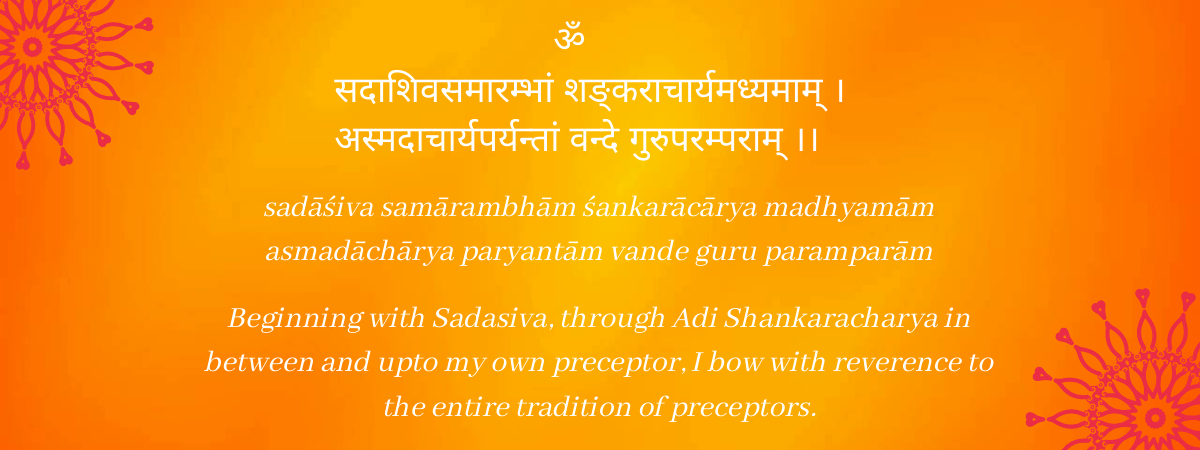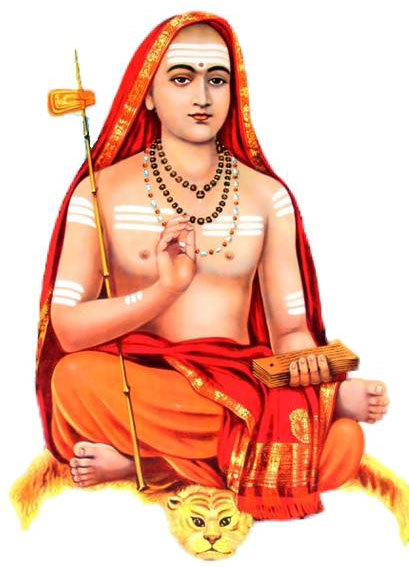

Adi Shankaracharya
Born in the 8th century in Kerala, Adi Shankaracharya is regarded as the central pillar of the Advaita-Vedanta (Non-duality) philosophy. From an early age, he was drawn towards the life of Sannyasa (Renunciation). He became a disciple of Govinda Bhagavatpada and continued his education at the feet of his Guru. He travelled across the Indian subcontinent to propagate the essential philosophy of Vedas and Upanishads through discourses and debates and worked for the revival and spread of the Advaita-Vedanta philosophy. His greatest contribution has been to give a written form to the teachings that have existed in the Sampradaya (tradition), where the Guru taught the disciple only through verbal instructions. Known as Shankara Bhashyam, his systematic reviews and commentaries on various Indian texts have been a valuable source of learning for spiritual seekers and scholars alike. These statements of his establish the basis of all Vedantic studies:
“The universe is unreal. Brahman is real. Individual Soul is Brahman”.
Also a great social reformer, Adi Shankaracharya helped rid the society of many evils that were being carried out in the name of religion. He gave a new perspective and outlook to rituals leading to refinement of religious beliefs. His extensive travels also saw him working towards the cause of national integration through his excellent leadership and scriptural approach. He left his physical body at the age of 32 in Kedarnath, Himalayas where a shrine now stands as a mark of respect to this great guru of India.